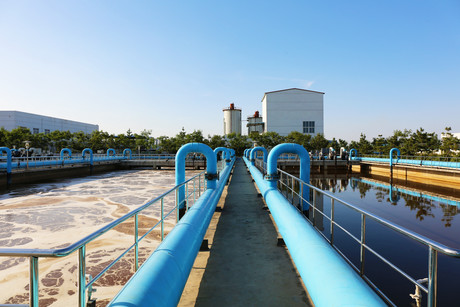The blow by blow on blowers

Ahead of Ozwater'19, Kaeser advises how to select the right blower for a wastewater treatment plant.
Despite being high consumers of energy, blowers are a key component of wastewater treatment plants (WWTPs). Selecting the right blower is critical.
Blowers have several fundamental purposes, including agitation, aeration, filter backwashing and methane capture, all of which come at a cost: blowers are estimated to consume upwards of 60% of a WWTP’s power consumption.
Kaeser Compressors have outlined key differences in blower design to address what factors should be considered when selecting an appropriate blower.
Splitting solutions
Typically designed to operate for 20–30 years, WWTPs are built for expected future increased capacity to account for growing communities, meaning that specified blowers are usually oversized for the plant in the first 10–15 years. This creates unnecessary cost to the operator and is not ideal for the longevity of the blower. To avoid this problem, a splitting solution using multiple blowers to vary flow load as the plant expands or decreases is beneficial.
Dynamic vs positive displacement
Blowers can be divided into two groups: dynamic or positive displacement (PD) machines. Dynamic machines work by accelerating air to high velocities and include centrifugal and high-speed turbo devices. These blowers are generally more complex, can produce large amounts of flow and can offer high efficiency ratings, but they have limited ranges of control.
PD machines, including lobe and screw blowers, work by trapping volumes of air at the inlet port, subsequently pushing air out of the discharge port. These devices tend to be simpler than dynamic machines, offering a proportionally wider control range, are less expensive to purchase and provide greater start/stop capabilities. Historically, the lobe compressors offer lower efficiency ratings and lower flow capacities than the larger centrifugal machines; however, this is changing with the introduction of modern screw-type designs.
Lobe-style blowers
Low investment cost, versatility in application and adaptive pressure capabilities are some of the key advantages of lobe-style blowers. This type of device will only operate at the pressure the system requires and can be turned on and off frequently.
Lobe-style blower packages work well in most WWTP applications. In the case of screw-type machines and high-efficiency turbo designs, the cost of energy will in many cases determine the product that will deliver the best payback on investment. This is especially the case for applications like filter backwashing and digesters, where minimal usage (filter backwashing) and fluctuating fluid depths (digesters) will extend the payback period. In these situations lobe-type machines provide sufficient performance at a reduced investment.
Screw-style blowers
Although the package component requirements of a screw blower will differ between manufacturers, they are generally the same as the lobe design. The main difference is the operating speeds of the screw. With the same air-end size, a screw blower typically runs at twice the speed of a compressor with a lobe design. This changes the design requirements for the drive system, posing an additional challenge for oil-side seals. For the drives this means faster speed motors and greater drive ratios or a gear drive transmission system. Due to splash lubrication, additional care is needed to cool, seal and capture the oil mist generated by such high speeds. This ultimately makes the machine more complex compared with the simplistic lobe-type design.

The process of internal compression, characteristic of a screw design, creates a 20–30% gain over PD designs. This number will depend on the operating pressures and speed control range. In addition to gains in design, screw machines perform better at lower speeds. Comparing the specific performance curves of both designs, the screw blower offers close to a flat line, whereas the lobe type has a severe ‘ski-ramp’ effect at the lower end. While turbo compressors may offer a slight advantage at one design point, their turndown is limited and their curve is u-shaped.
Screw-design blowers are best suited for steady operating pressures with many running hours. For this reason they are a good fit for aeration basins that require air at all times and where the fluid depth doesn’t fluctuate excessively. Integrating these blowers into the control system via IIoT allows more advanced machine control and preventive maintenance efforts.
Kaeser will showcase their compressed air management system and rotary screw compressors at Ozwater'19, 7–9 May 2019, Melbourne, Vic.
For more information, visit www.ozwater.org and www.kaeser.com.au.
A first line of defence in wastewater screening
Two Queensland councils have opted for Australian-manufactured screening technology to protect...
Beef processor selects wastewater pump solution for dual purpose
John Dee Warwick wanted to upgrade its wastewater pump system to handle the day-to-day flows...
Melbourne Water finds an energy-saving solution
Sewage and wastewater treatment is a highly energy-intensive process, presenting a challenge for...







